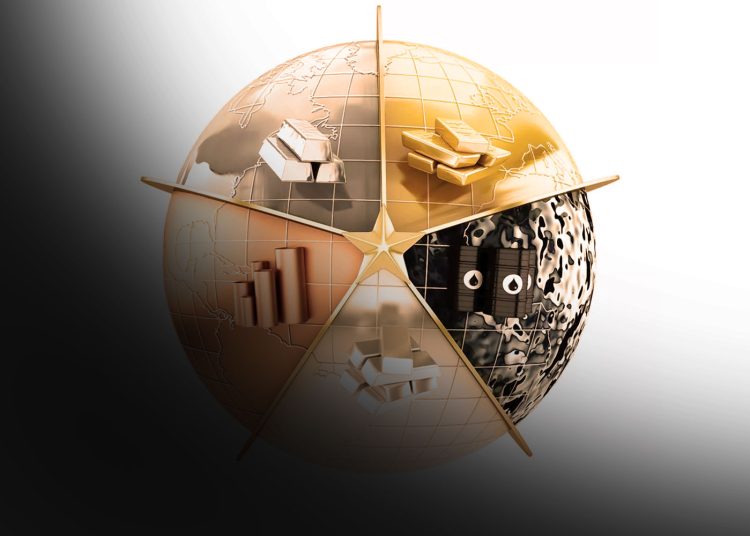A commodity is a raw material or primary agricultural product that can be bought and sold. It is a tangible commodity that can be produced and used by individuals and businesses. Commodities can be divided into four types: Agricultural, Energy, Metals, and Financial. Agricultural commodities include wheat, corn, soybeans, and livestock. Energy commodities include crude oil, natural gas, and coal. Metal commodities include gold, silver, platinum and copper. Financial commodities include currencies and interest rates.
Commodities are an important part of our daily lives as they are used to produce goods and services. Wheat and soybeans, for example, which are used to make bread, and livestock are commodities. Commodities are traded on commodity exchanges, where buyers and sellers agree on a price for the commodity. This allows producers to sell their goods at a fair market price and consumers to buy the goods they need at a reasonable price.
In general, commodities play an important role in the global economy and their prices can be affected by various factors such as geopolitical events, weather, supply and demand. For investors, traders, and anyone interested in the global economy, it is important to understand the commodities market.
What Is A Commodity And What Is An Example?
A commodity is a raw material or primary agricultural product that can be bought and sold, such as gold or wheat. Commodity markets are markets where such commodities are bought and sold and whose prices are determined by global supply and demand.
An example of a commodity is crude oil, which is often used as a source of energy. Crude oil is traded in commodity markets and prices fluctuate depending on global demand and supply as well as geopolitical events. Other examples of commodities include copper, coffee and soybeans.
Because commodity prices tend to rise during periods of economic growth, investors often view commodities as a hedge against inflation. Commodities can also help diversify an investment portfolio by providing a way to spread risk across a range of assets.
While trading commodities can be profitable, it is also important to understand the risks involved. Prices can fluctuate rapidly depending on a variety of factors such as global events and changes in supply and demand. As with any investment, it’s important to know the market well and carefully consider your investment goals and risk tolerance before getting involved in commodity trading.
History of the Commodity Market
The commodity market has a long history dating back to ancient times. The first commodity market was believed to have been established in Sumer in the 4th millennium BCE. The ancient Egyptians and Greeks also traded in commodities, primarily wheat and barley.
During the Middle Ages, commodity trading became more sophisticated. The Hanseatic League, a confederation of merchant guilds, dominated trade in northern Europe and established trading posts across the Baltic and North Seas. They traded in commodities such as salt, furs, and wool.

In the 17th century, the Dutch East India Company became the first company to issue shares of stock and trade in commodities such as spices, tea, and coffee. The Industrial Revolution in the 19th century brought about a significant increase in commodity trading, as advances in transportation and communication made it easier to transport goods across long distances.
Today, the commodity market is a global marketplace that trades in a wide range of commodities. The market is primarily driven by supply and demand, as well as geopolitical events and global economic trends.
How are Commodities Traded?
Commodities are traded on exchanges, which are marketplaces where buyers and sellers can meet to trade commodities. There are several major commodity exchanges around the world, including the Chicago Mercantile Exchange (CME), the New York Mercantile Exchange (NYMEX), and the London Metal Exchange (LME).
Trading in commodities can be done in two ways: spot trading and futures trading. Spot trading is the buying and selling of commodities for immediate delivery. Futures trading is the buying and selling of contracts for the delivery of commodities at a future date.
Commodity futures contracts are standardized agreements between buyers and sellers to purchase or sell a certain amount of a commodity at a predetermined price and date in the future. Futures contracts are traded on exchanges and can be bought and sold like stocks.
Impact on the Global Economy
The commodity market has a significant impact on the global economy. The prices of commodities are closely watched by investors, traders, and governments, as they can have a ripple effect on the prices of other goods and services.
For example, the price of oil can impact the cost of transportation, heating, and manufacturing. The price of wheat can impact the cost of food and livestock feed. The price of gold can impact the value of currency and inflation.
Commodity prices are also closely linked to geopolitical events and global economic trends. Wars, natural disasters, and political instability can disrupt the supply of commodities and cause prices to rise. Economic booms and busts can also impact the demand for commodities and their prices.










